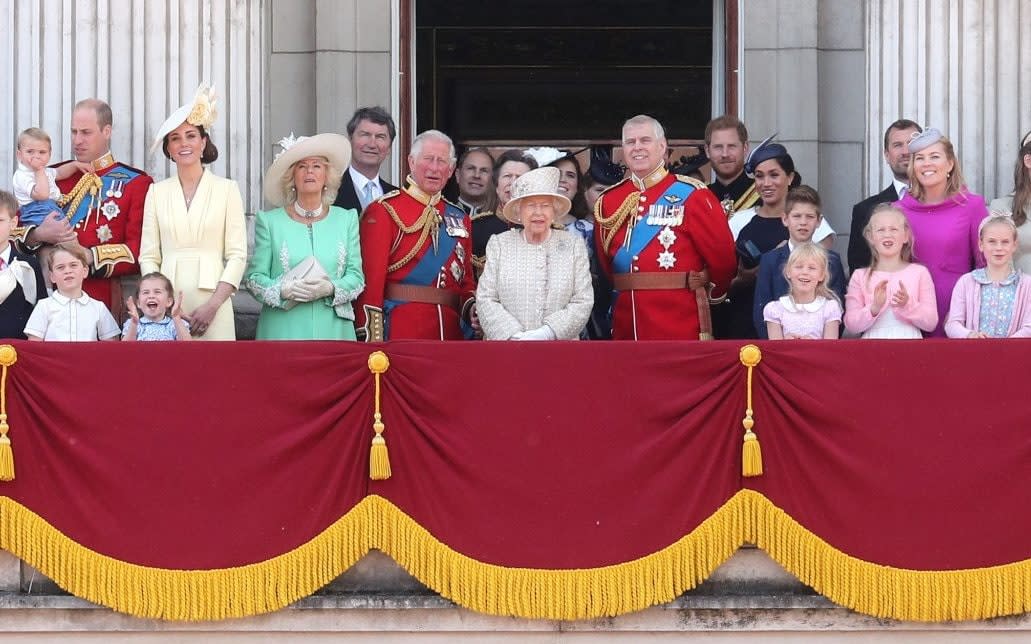Prince Harry accuses Royal family of ‘unconscious bias’ when it comes to race

- Oops!Something went wrong.Please try again later.
Prince Harry has claimed the entire Royal family have an “unconscious bias” on race as his new Netflix documentary portrays the monarchy as key funders of slavery.
The Duke of Sussex says learning about race is a “constant work in progress” as he describes wearing a Nazi uniform to a fancy dress party as “one of the biggest mistakes of my life”.
Meanwhile, historians tell viewers that royal palaces are filled with “racist imagery” and that murals and statues “glorify the institution of slavery”.
The third episode of the six-part Netflix documentary Harry & Meghan focuses heavily on accusations made by the couple in the past that the Royal family, and Britain as a whole, are racist.
The couple has claimed in the past that a member of the Royal family speculated about the colour of their children’s skin because the Duchess is mixed race.
The documentary seeks to ram home the idea that Britain, the monarchy and the Commonwealth are racist, using the history of the British Empire, the treatment of the Windrush generation and the murder of Stephen Lawrence as examples.
Prince Harry tells the documentary makers there is a “huge level” of unconscious bias within the Royal family and that it is “a constant work in progress for everyone, including me”.
He says that wearing a Nazi uniform to a fancy dress party was “one of the biggest mistakes of my life” and that he immediately sought to educate himself by speaking to a rabbi and visiting Berlin to speak to a Holocaust survivor.
Meghan describes her “wonderful” first Christmas at Sandringham when she sat next to Prince Philip at dinner, but the documentary immediately cuts to images of Princess Michael of Kent wearing a “blackamoor” brooch to Christmas lunch at Buckingham Palace.
Historian Afua Hirsch tells viewers the brooch controversy was not a surprise because “if you go into a palace or a stately home or anywhere that represents tradition you are likely to be faced with racist imagery”. She says murals and statues “glorify the institution of slavery”.
Fellow historian David Olusoga talks about the scale of the British Empire in Victorian times and says the question is “who has paid the cost in all of this?”.
Hirsch, who is described on screen as Brit(ish), tells viewers that Britain had a “deep south” in the form of the Caribbean, and enslaved more Africans than America did.

She goes on to tell viewers that “the first British slave expedition was personally financed by Queen Elizabeth I and it continued to be financed by kings and queens right up until its abolition".
The slave trade was abolished in 1807 but Olusoga says children are not taught about the reparations paid to slave owners, which is "another way that the slave trade has been airbrushed out of Britain's story".
Olusoga says the Commonwealth is at the centre of the argument for the monarchy in the UK and that Meghan “looked like most of the people in the Commonwealth”.
But Hirsch says the Commonwealth is a “club of former colonised countries”, without mentioning that several member countries that have chosen to join the Commonwealth - including Rwanda, Mozambique, Gabon and Togo - have no ties to the British Empire.
The murder of black teenager Stephen Lawrence in 1993 is used as an example of racism within British society, and Harry and Meghan are shown attending a memorial service for the 25th anniversary of his death.
Their attendance was “really welcomed by many black communities in Britain”, says Hirsch, as she applauds Harry for “transforming himself into an anti-racist”.
The programme also attacks the British media for their reporting of the Royal family but makes no mention of the fact that two of Lawrence’s murderers were brought to justice following a high-profile campaign by the Daily Mail.

